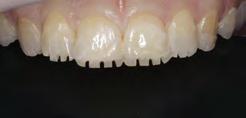01 /2019
04
An exciting change Comparison of the IPS d.SIGN and IPS Style ceramic systems
10 The gold standard: IPS e.max Press – one material for virtually all indications?! Posterior occlusal veneers in the dental practice
20 Preoperative digital planning RAW workflow: A professional’s approach to planning monolithic restorations on single-tooth implants


